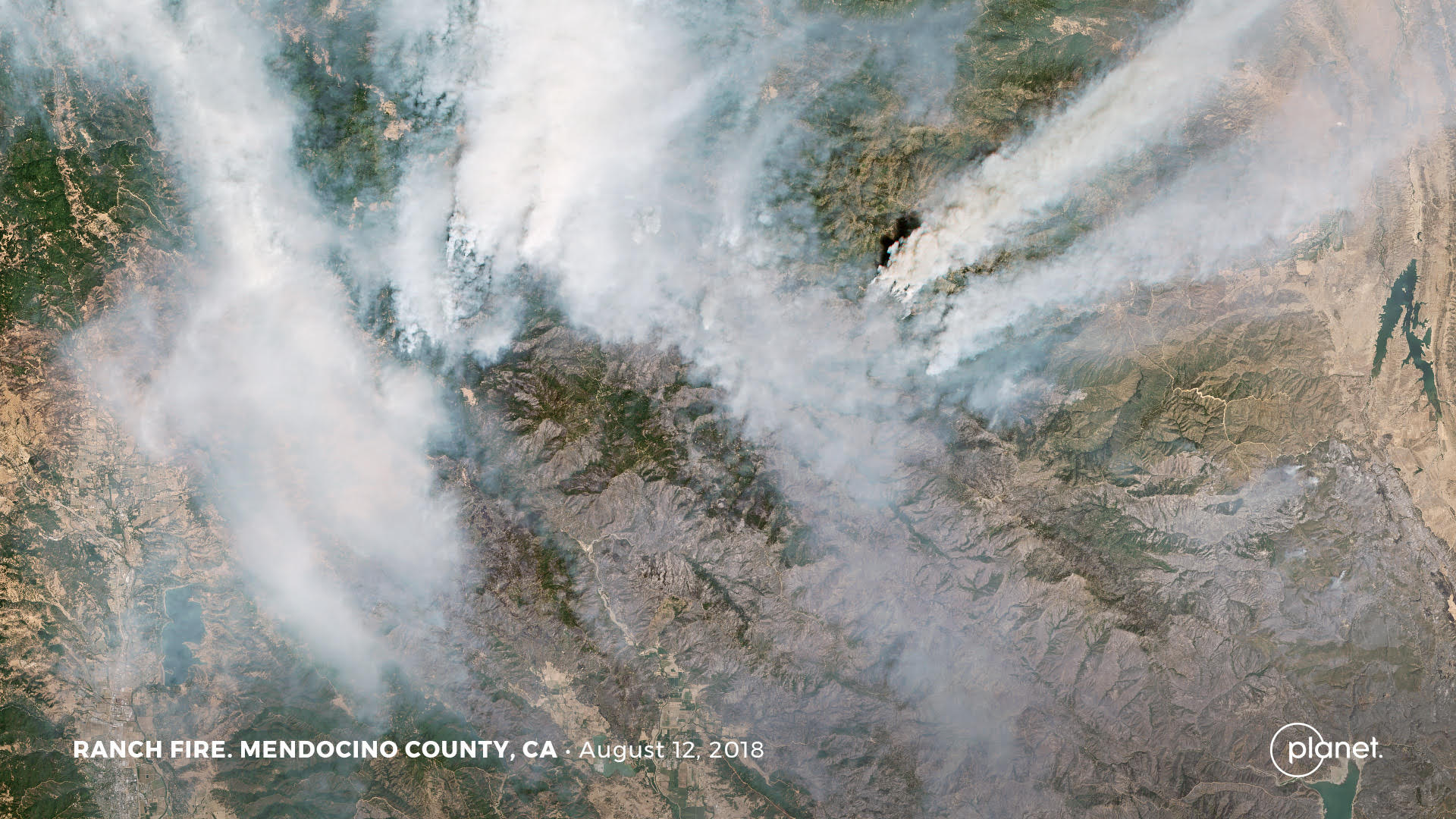Aug 20, 2019
by Christopher Anderson and David Marvin
Salo Sciences, Planet, and Vibrant Planet are announcing a partnership to develop the California Forest Observatory (CFO)—a new platform that will dynamically map forest structure and fuel loads down to the tree level, statewide. Combining satellite imagery and artificial intelligence (AI), along with weather, climate, population, and infrastructure data, and supported through funding from the Gordon and Betty Moore Foundation, the Observatory will provide an unprecedented, continuously updated view of wildfire risk in the State of California.
The Observatory will help the State and other stakeholders to prioritize, plan, and execute treatments of hazardous fuels, improve emergency wildfire operations, and monitor the short-term impacts and long-term benefits of improving forest resilience to wildfire, disease, and climate change.

“More than a century of fire suppression, aging utility infrastructure, rapid wildland-urban interface development, and climate change have combined to elevate the probability of catastrophic wildfire,” said David Marvin, co-founder and CEO of Salo Sciences. “The Observatory is designed to help the state mitigate risk to people, while it works to restore crucial ecosystems.”
“With a majority of California’s forests at high risk, the Observatory comes at a crucial time,” said Helge Eng, Deputy Director of Resource Management at the California Department of Forestry and Fire Protection (CalFire). “The data and technologies available today can help us better see, understand, and mitigate risk, as well as coordinate action to save lives and property.”
The Observatory will leverage daily, high-resolution satellite imagery produced by Planet and other remote sensing data sources, the AI-powered scientific insights of Salo Sciences, and the stakeholder-engagement and strategic planning capabilities of Vibrant Planet.
With the incredible technology available today, and the magnitude of climate change and biodiversity loss, we see an urgent need to use data to reduce emissions, conserve habitat, and balance the health of people and the planet.
Primarily designed as a forest planning and monitoring tool, the Observatory has many potential applications, in areas as far-reaching as emergency services, scientific research, risk-management, agriculture, insurance, and more.
“The velocity of action is always limited by the velocity of information,” said Andrew Zolli, Vice President of Global Impact Initiatives at Planet. “By providing a much more dynamic, near-real-time view of California forests, we hope to enable many actors to move faster and more effectively.”
“Many of the state’s iconic forested landscapes could be permanently converted to shrublands or grasslands due to disease, climate change and megafire in the next few decades if we don’t rapidly accelerate the pace and scale of restoration,” said Malcolm North, an ecologist with the US Forest Service. “Better intelligence on current forest conditions will help us scale restoration, including getting crucial, low-intensity fire safely back into this fire adapted landscape.”
The Observatory was conceived after many discussions with the scientific community, the US Forest Service, and CalFire. Funding from Tahoe Fund’s new Smartest Forest Fund, announced today, will partially support the design and development of a user-friendly “front end” interface for the Observatory to ensure broad usage. Experts in land management, emergency services, forest ecology, wildfire, meteorology, hydrology, wildlife biology, user experience, and cartography will continuously be engaged to optimize the design and build of the platform by Vibrant Planet, a strategic communications and product experience consultancy. To ensure accuracy and relevance, the beta version of the platform will be provided for free to scientists, as well as state and federal agencies, with support from Tahoe Fund’s new Smartest Forest Fund.
“We’ve seen the potential of the Observatory to expand the work underway to restore forests around the Lake Tahoe Basin,” said Jeff Marsolais, Forest Supervisor, Lake Tahoe Basin National Forest. “We’ll continue pioneering the use of many of these technologies to protect our communities and this iconic landscape.”